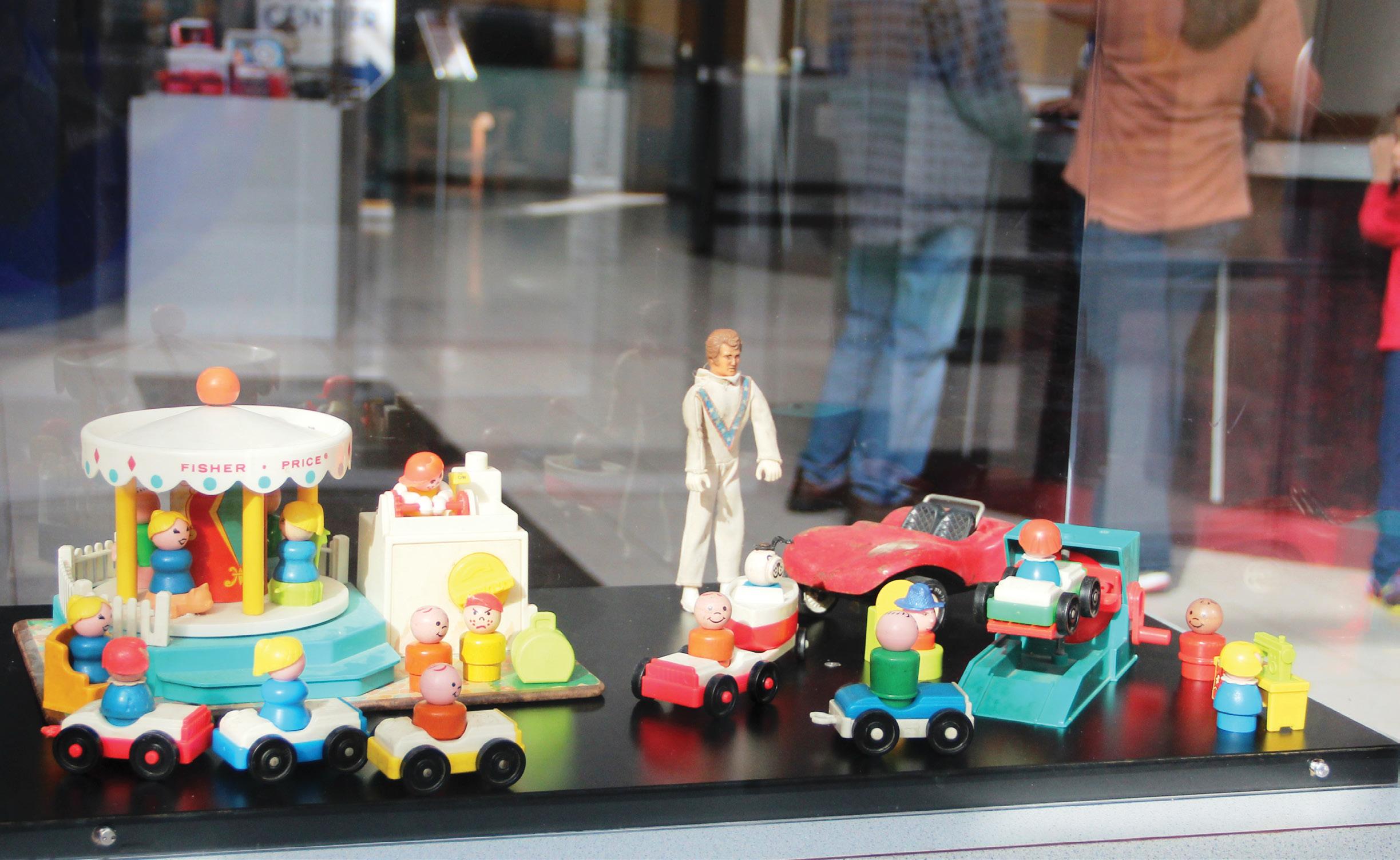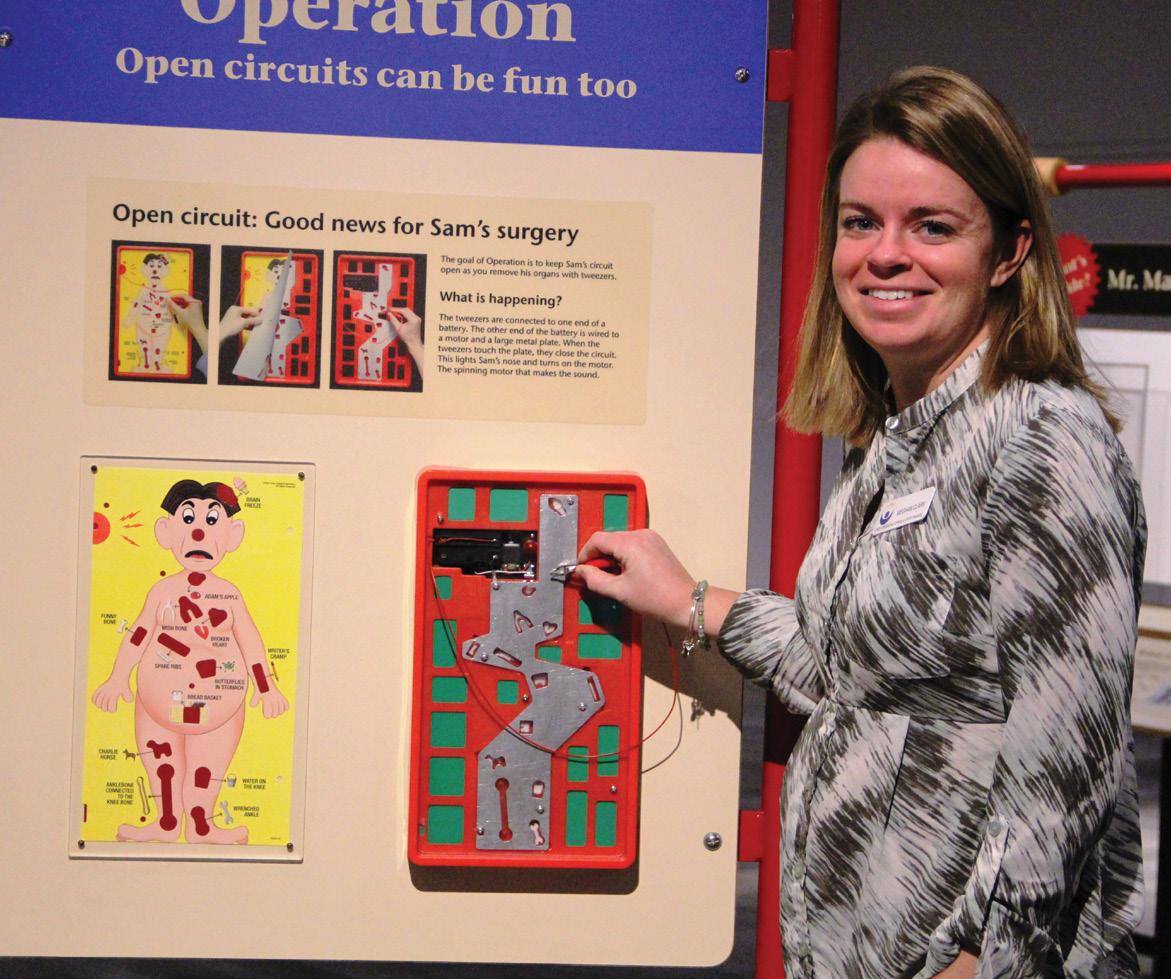
6 minute read
IT'S ALL ABOUT TOYS
Story and Photos By Jeff Falk

Toys are recreation. They are fun. They’re nurturing. Toys are supposed to make us think. But not too much. We really need to be careful around toys. Because if we’re not, we might just learn some things. And if the best way to teach is through fun, then toys are an invaluable tool.
Toys have been with us since the beginning of time. They possess the power to develop human beings, and the power to both affect and reflect our society and culture.
Toys are personal, unique, universal and gender-less – and they can foster imagination and creativity. Toys can be simple in their design, or they can be quite complex.
Introducing Meghan Clark.
Clark is a toy expert. She used to play with them all the time when she was a kid.
“Yes, we’ve all been influenced by toys,” says Clark. “Whether it’s a baby doll or something more elaborate, all kids have seen toys. The way we use toys is based on our personalities. The way I think is different than the way you think. We could both play with the same toy in totally different ways.
“They’re fun,” continues Clark. “They can keep children engaged. A puzzle is a toy that’s engaging and can help children learn. Puzzles can teach shapes and letters. That’s the point of a lot of toys – to learn.” So it is obvious that toys work. But how do toys work? “The science behind toys has allowed them to evolve,” says Clark, who’s also the Chief Operating Officer and Vice President of Finance for the Whitaker Center, downtown. “Older toys were more basic, not very elaborate. The science is why they have evolved into what they are today. “Because science has evolved, toys have become much more advanced,” adds Clark. “It’s why it’s important to expose kids to the science of toys. It’s important for kids to understand the technology and engineering behind them. Kids want quick results. They want to see things happen immediately. It’s a kid’s personality, but it’s also what has evolved.”
The Whitaker Center for Science and the Arts, 222 Market Street in Harrisburg, is hosting a hands-on, traveling exhibit called “Toys, The Inside Story,” from now to May 10. The display is designed to give children of all ages a glimpse inside toys and what makes them tick. It’s kids playing with the toys that make toys, toys. “What I really remember is every Christmas my parents would give me and my sister a Lego set, a puzzle and a game,” says Clark. “We’d sit around for the week after Christmas playing the game, playing with the Lego sets and playing with the puzzles. It was so fun. It kept us engaged. My parents would do it with us, and that would make it even more fun.








The Lego sets they bought us were like a police station or a fire station, some community thing. There was always a lesson behind it.
“With the puzzle, the lesson behind it was problem solving and trial-and-error,” Clark adds. “With all of them, there was some end product to it. It taught us patience and critical thinking. Now I can see the results. At the time, I just thought it was fun. Looking back on it, there’s an appreciation I gained for it. Definitely the critical thinking and problem solving carried through to high school, college and into my career now.”
Within the walls containing The Whitaker Center’s “Toys, The Inside Story,” the possibilities are endless.
Pulleys and belts enable an Etch-a-Sketch to draw. Circuit boards and a power source bring the game Operation to life. Motors and linkage create Pudgey The Pig’s deliberate movements.
Turning the crank on the side of a Jack-in-the-Box will produce a surprise. “It’s sort of a history of well-known toys,” says Clark. “Simple mechanics are found in all toys. It’s gears at play. When you turn the knobs on the Etch-a-Sketch, how does it make a drawing on the screen? With the Operation game, there’s science behind how it works. It explains what makes Pudgey The Pig move. There’s a lot of engineering in this exhibit.
“A lot of toys are made with gears in them,” continues Clark. “It’s really important to have things that can move, not just something to look at. Kids aren’t going to stand here and read. You can see how the inside works when you break it down. Something really interactive seems to work well.” “Toys, The Inside Story” is about the subject and the presentation. It reminds us that knowledge is empowering.
“We want exhibits that are going to grab a kid’s attention and keep them interested,” says Clark. “And something that resonates with parents. Kind of like, ‘Oh, that’s something I played with; now I want my kids to experience it.’
“Specifically, my favorite thing about the exhibit is the science behind the Operation game,” adds Clark. “Just observing the kids in the Operation space is fun to watch. It’s fun to see the kids be successful. I’d like them to be thinking, ‘What’s the science behind it? What’s the engineering behind it?’ They don’t think of those questions.”
Because toys have played such an important role in our past, their place in the future is secure. The only real mystery is the direction in which they are headed.
“I really think toys are going to continue to become more complex,” says Clark. “Science is going to continue to evolve. When you’re younger you think, ‘This is something that’s as advanced it’s ever been.’ Toys are going to become more advanced than we can imagine.”
The Whitaker Center for Science and the Arts has been serving the Harrisburg community since 1999. Its mission is to enhance the lives of all residents and make Harrisburg a better place to live.
“It’s a place to discover it all,” says Clark. “It’s about imagination. People can come here and discover science, engineering and technology. It’s a place for kids to come and discover things they want to see. You can learn here and think creatively. But you don’t always realize it because you’re having fun.
“I hope people will want to see this awesome exhibit,” concludes Clark, “and that they want to come and find out what it’s all about. That, and everything that Whitaker Center is about. We’re doing a lot in the community.”
Few exhibits reflect what the Whitaker Center is all about better than “Toys, The Inside Story.” 7













